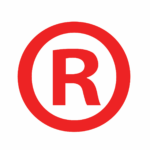How to come up with a name for your business. How to name your business.
I’ve helped many clients come up with a name for their business or product. When deciding how to name your business or product, the first motivation is to choose a good name. You want a catchy name – a memorable name – a name that identifies with the core message of your business. Selecting a company name or product name for trademark use involves balancing this stylistic process with laws and rules for trademarking a name. You can visit my other articles for a discussion of the Strategies to Consider when Choosing a Name for Trademark Use, Tips for Naming Your Business, and Four Key Legal Considerations When Naming Your Business. But here, I want to discuss what I call the Stylistic Approach to Selecting a Business Name or Product Name.

In my long experience as a trademark attorney and business owner, the following steps helped me develop ideas for choosing trademarks, company names, brand names and logos:
Choosing Your Business Name – How to come up with a name for your business.
Step 1: Select a Name that Evokes your Desired Brand Image and its Core Message
Start off with writing out a list of words, word combinations, and short phrases that identify with the core message of your business. Your name is an extension of your brand. It will become your identity. Consider the goods & services that your company offers, and how you can position yourself in the market to connect with potential customers. To come up with a name for your business, consider words and phrases that identify or suggest the core message of your business. You want to use words customers will identify as your brand as set apart from the others. You will build brand authenticity with a powerful name that reinforces your overall mission and values.

Tip: Use a Combination of descriptive and arbitrary words. Descriptive words, although not protectable alone as a trademark, help identify the product or service. Arbitrary words are protectable as a trademark because they have no descriptive relationship with the goods or services. Combining both descriptive and arbitrary terms typically results in a protectable trademark that identifies both the source and the type of goods or services.
Step 2: Visit the Thesaurus to come up with a name for your business by its Core Message
Think of words or phrases that fit your desired brand image. Allow yourself to be creative. Write down any and all ideas, talk to people, and research your competition. The Thesaurus is a great tool to take advantage of during this process. Searching for synonyms will give you more variety in your word choices and enhance creative thinking.
Step 3: Try to Lock in a Corresponding Domain Name
Your domain name is your identity on the web. Keep it simple and easy to type. Try to get the domain names that match your chosen business or brand name. Often, the failure to find a corresponding domain name will send you back to the steps above in selecting a business name or product name.
For example, on my desk sits a yellow notepad with at least 50 sets of possible trademarks and corresponding domain names for a media business. There are names scribbled on the margin. There are notes and names – .coms, .nets, .orgs. – scribbled on the top roll that folds over. Some of the names are scratched out for one reason or another. And, of course, I flipped the bottom of the page up and folded it in half so I can write more ideas. This is just for one business name idea.
Utilize tools such as GoDaddy to search for available domain names. Business Name Generators like NameMesh are great for this. Type your desired domain name into the search bar to find out what names are already in use, and any suggested modifications to improve your name. Consider using a .net, .biz, .us, etc.
Step 4: Watch Out for Prior Users, Registered or Not
a. Visit uspto.gov
Search for your trademark in the USPTO database by visiting uspto.gov. Click Trademarks, and then Search Trademarks Database. This will direct you to the TESS search engine where you can search for trademarks by basic word mark, word, or design codes. A prior registered trademark could block you from registering and using your new business name or brand.
b. Do a Common Law Trademark Search
A Common Law Trademark search explores databases, news, business and public records, and legal and financial records to find out if someone is using a similar trademark. This search even includes trademarks that are not yet registered in the Patent and Trademark Office (USPTO). A Common Law Trademark search will help you determine whether your business name can be used. Common law trademark owners can block your trademark application and claim infringement.
There are multiple resources you can use in your Common Law Trademark search. Start on the Internet with search engines such as Google and Bing. Newspapers, TV, and Yellow Pages can also be helpful. Don’t forget to search State Trademark Registers and Cases and administrative materials.
c. Exact Searching Is Not Enough – Similar Marks Can Block Your Trademark
When coming up with a business name, just changing a few letters of some other brand name will not keep you free from infringement. Confusing similarity between brands is measured, in part, by, comparing the elements of sight, sound, and/or meaning. Infringement can stem from a finding of similarity in any one element.
When doing your search, you need to consider misspellings, alternate spellings, phonetic variations. You should also search for any words you can think of that have similar meanings.
“Likelihood of confusion” is the test for determining whether an existing trademark can block an application from registering. It is also the test for trademark infringement. The Likelihood of Confusion test evaluates 11+ factors. In most cases, the analysis boils down to two main considerations: (1) the similarity of the marks, and (2) the similarity of the goods.
Step 5: Be Aware of the Legal Rules for Registering & Protecting a Trademark
Trademark law is a maze of rules that dictate whether you can take ownership of exclusive rights to a company name or brand. When you work through the stylistic process of naming your business, you want to keep these trademarking rules in mind. This way, you can come up with a name for you company that is also protectable under the trademark laws.
In summary, choosing your business name is the ongoing process of (1) brainstorming names, (2) visiting the Thesaurus for ideas, (3) searching to lock in a corresponding domain name, (4) searching to see if anyone else registered the name for the same or similar services, and (5) taking the necessary precautions for registering and protecting your trademark.
It is important to seek advice from an experienced trademark attorney when choosing your brand name for trademark use. We appreciate new clients and will be happy to schedule a free phone consultation to further discuss your trademark strategy. Contact us today!
